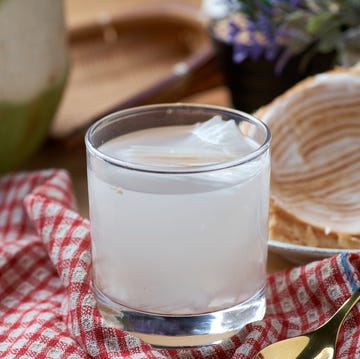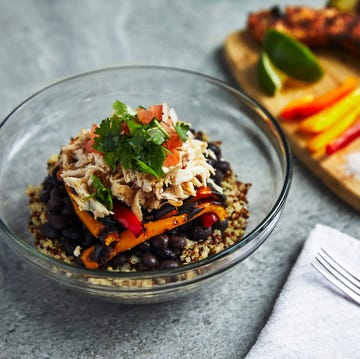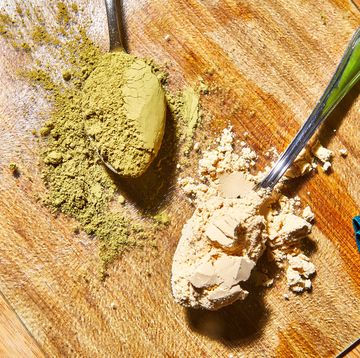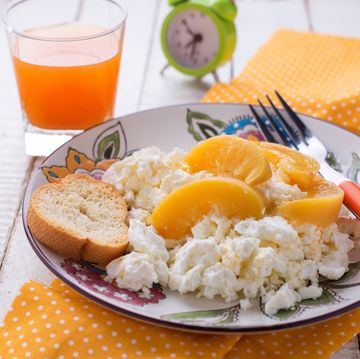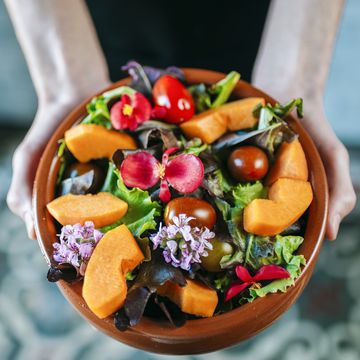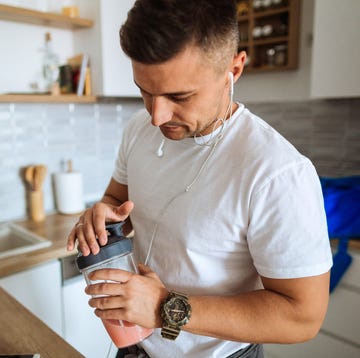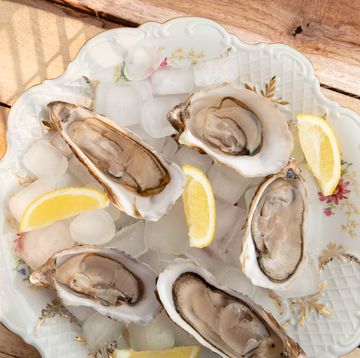We stock our fridges with fruits and vegetables for a few reasons: They provide us with the nutrients we need to stay healthy, they can help us fuel our runs because they’re great sources of carbs, and they also taste great, adding a sweet bite to your dishes! But before you enjoy your prerun apple, it’s best to make sure you clean it off the right way.
The internet is flooded with different ways to clean fruits and vegetables, like pre-soaking them in water with a bit of baking soda or vinegar, spraying them with produce spray, or using a tiny electric purifier. But experts say the approach below is the best way to clean fruits and vegetables—and it’s easier than you think.
What’s the best way to clean fruits and vegetables?
During the harvesting process—growing, picking, packing, and shipping—fruits and vegetables may come into contact with dirt, bacteria, and chemicals. This is why it's important to clean produce before eating it, says Mandy Tyler, M.Ed., R.D., C.S.S.D., registered dietitian, and certified specialist in sports dietetics.
More From Runner's World

To clean produce it’s quite simple and it doesn’t take a ton of steps or fancy kitchen gadgets.
“The guidance from the Food and Drug Administration, as well as the Centers for Disease Control and Prevention, is that running water and some gentle friction, whether that be with a vegetable scrub brush, or even just with your hand, under running water, is the most effective way to clean your fruits and vegetables,” says Tyler. It doesn’t matter if the fruits and vegetables are grown at home, or purchased from a grocery store or local farmer’s market, the process to clean them is the same, she adds.
Even when there’s dirt in the nooks and crannies of root vegetables, like carrots and potatoes, washing them with water—a natural cleaner—and a scrub brush is enough, says Catherine Hibbitt, R.D., M.P.H., registered dietitian at God’s Love We Deliver, a New York City-based charity that serves free healthy meals to people with serious illness.
Bottom line: If you’re washing any fruit or vegetable (even those with an inedible peal), water will get the job done. “If we don’t wash it first, we’re going to slice that dirt or bacteria into the produce that we eat,” says Tyler.
Should you use vinegar, baking soda, or produce wash?
Washing produce in vinegar, baking soda, lemon juice, or other products may seem common but it’s not necessary. These methods won’t enhance the nutritional value of a fruit or vegetable and it won’t make them last longer, says Hibbitt. If anything, these methods might make produce look more vibrant and appealing but nothing else, Hibbitt says.
What’s more, research has shown that cleaning fruits and vegetables with gentle friction and running water is just as effective as using lemon juice, vinegar, and produce cleaners, Tyler adds. Therefore, it’s not necessary to take the extra step. And you definitely don’t need soap or bleach.
Another downside: Washing fruits and vegetables in vinegar (or other strong cleansers) can alter the taste and discourage you from eating them, says Tyler.
Other Tips for Preparing and Storing Fruits and Vegetables
Here are a few other tips from Hibbitt and Tyler to keep in mind before eating or storing fruits and vegetables:
1. Disinfect Your Prepping Station
To ensure the safety of your produce and prevent any foodborne illnesses, properly clean and disinfect any utensils and surfaces before preparing your food, says Hibbitt. Keep this in mind especially when handling other foods beforehand like raw meat and seafood.
Also, wash your hands before preparing any fruits and vegetables to avoid contamination, says Tyler.
2. Dry After Washing and Before Storing
“Bacteria doesn’t grow where there’s a dry environment, so dry it off, and then store it in the fridge until you’re ready to use it,” says Hibbitt.
3. Refrigerate
If you wash your fruits and vegetables and then throw them in the fridge, you’ll need to wash them again before eating to avoid foodborne illnesses, especially if there’s a situation where cross contamination can occur, like storing produce near raw meat, which should be avoided, Hibbitt says.
If the fruit or vegetable is typically stored outside of the fridge like apples, pears, and oranges, once you slice them, they need to be refrigerated within two hours. Keep them in a cold environment until you’re ready to eat them, says Tyler.
Lastly, if you want to prolong the life of cucumbers or leafy greens, Hibbitt suggests storing them in the refrigerator in a shallow container with a bit of water.

Monique LeBrun joined the editorial staff in October 2021 as the associate health and fitness editor. She has a master’s degree in journalism and has previously worked for ABC news and Scholastic. She is an avid runner who loves spending time outside.

